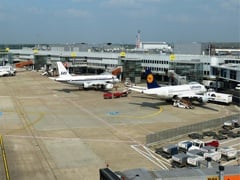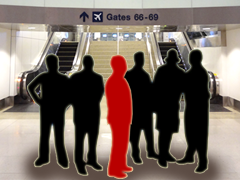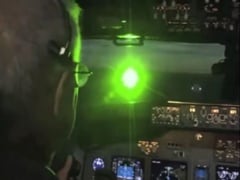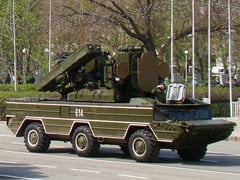 Aviation makes up a substantial part of the transportation industry. Its size, impact, integration and use by countries all over the world make it vulnerable to attacks. Over the years, we’ve witnessed persistent threats to aviation and recognize that they will continue as long as there are people who want to cause harm to the air industry.
Aviation makes up a substantial part of the transportation industry. Its size, impact, integration and use by countries all over the world make it vulnerable to attacks. Over the years, we’ve witnessed persistent threats to aviation and recognize that they will continue as long as there are people who want to cause harm to the air industry.
The people organizing and carrying out criminal activities are rapidly becoming more sophisticated with their methods and techniques. That’s why we all need to be aware of emerging threats to aviation security.
Threats to the Aviation Industry
 Improvised Explosive Device: IEDs have long existed and yet today, it still remains a major threat to aviation and security. IEDs are made out of common household products and range from simple to elaborate. They are easy to mold and can fit anywhere, which make them even more dangerous when concealed well.
Improvised Explosive Device: IEDs have long existed and yet today, it still remains a major threat to aviation and security. IEDs are made out of common household products and range from simple to elaborate. They are easy to mold and can fit anywhere, which make them even more dangerous when concealed well.
From the underwear bomber of 2009 to the cargo plane bomb plots of 2010, there are now concerns of more creative concealment techniques using a new generation of improvised explosive devices and components that will be even more difficult to detect. This includes thermite-based incendiary devices which the U.S. Transportation Security Administration (TSA) acknowledges is a serious threat that burns violently and at a high temperature. IED evolution blog
 Insider Threat: The insider threat can come in the form of an ex-employee, current employee, contracted worker, or partner. Because they carry inside knowledge of the industry, an insider threat’s true underlying motive and unpredictability can be frightening. Internal threats are capable of exploitation, tampering, fraud, espionage, theft, and sabotage. Insider threat blog
Insider Threat: The insider threat can come in the form of an ex-employee, current employee, contracted worker, or partner. Because they carry inside knowledge of the industry, an insider threat’s true underlying motive and unpredictability can be frightening. Internal threats are capable of exploitation, tampering, fraud, espionage, theft, and sabotage. Insider threat blog
Cyber Attack: With society’s increasing reliability on technology, cyber security must be a high priority. Cyber threats to computer systems on the ground and at the airport can cause flight delays, loss of power, system failures, and a breakdown in communication between networks. Attacks to aircrafts in the sky can mean disruptions to navigations systems, losing on-board aircraft control, and no communication with the ground. Cyber attacks are inexpensive to carry out, but are able to cause a broad range of disruptions.
 Laser Illumination: Laser pointers used to disorient and temporarily blind pilots in the cockpit has risen drastically compared to previous years. The U.S. Federal Aviation Administration (FAA) reported 3,894 laser illumination incidents in 2014 in the United States as compared to 283 in 2005. Last year, there were 73 laser incidents at PHX airport (Phoenix, AZ), 74 at PDX airport (Portland, OR), 75 at LAS airport (Las Vegas, NV), and the highest being 107 incidents at LAX airport (Los Angeles, CA).
Laser Illumination: Laser pointers used to disorient and temporarily blind pilots in the cockpit has risen drastically compared to previous years. The U.S. Federal Aviation Administration (FAA) reported 3,894 laser illumination incidents in 2014 in the United States as compared to 283 in 2005. Last year, there were 73 laser incidents at PHX airport (Phoenix, AZ), 74 at PDX airport (Portland, OR), 75 at LAS airport (Las Vegas, NV), and the highest being 107 incidents at LAX airport (Los Angeles, CA).
Just last week 11 commercial airliners and 1 military aircraft reported lasers pointed at them at EWR airport in Newark, NJ. Laser pointers are dangerous devices that can obscure a pilot’s vision, put passenger lives at risk, and endanger civilian lives on the ground.
 Surface-to-air Missile (SAM): Also known as a ground-to-air missile (GTAM), this weapon is designed to take down aircrafts and other missiles in the sky. This also includes man-portable air-defense systems (MANPADS) which are handheld versions of this dangerous weaponry. These missiles pose a serious threat to air travel and can bring down an aircraft with one shot if in the wrong hands. Just over one year ago, Malaysia Airlines Flight 17 was tragically taken down over Ukraine with a surface-to-air missile.
Surface-to-air Missile (SAM): Also known as a ground-to-air missile (GTAM), this weapon is designed to take down aircrafts and other missiles in the sky. This also includes man-portable air-defense systems (MANPADS) which are handheld versions of this dangerous weaponry. These missiles pose a serious threat to air travel and can bring down an aircraft with one shot if in the wrong hands. Just over one year ago, Malaysia Airlines Flight 17 was tragically taken down over Ukraine with a surface-to-air missile.
Summary
Staying ahead of the latest threats will be of critical importance in the aviation industry. This means proactively finding vulnerabilities within your own systems and processes and ensuring they are strengthened. This also means training employees to recognize dangerous items on the job and unusual behaviors among passengers and other workers. Keep employees informed about the latest emerging threats and create a network for information sharing.
What other emerging threats exist in the aviation industry? Let us know your finding below.
